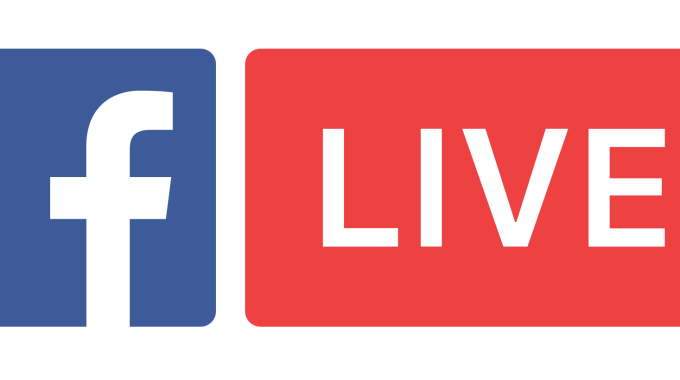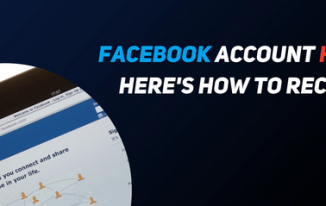In this digital era, social media platforms like Facebook have become integral parts of our lives. From staying connected with friends and family to promoting businesses and events, Facebook offers a multitude of features to its users. One such feature that has gained immense popularity is Facebook Live, which allows users to broadcast live videos to their followers in real-time. If you’re eager to share your experiences, ideas, or events with your Facebook audience, going live is an excellent way to engage with them directly. In this guide, we’ll walk you through the step-by-step process of going live on Facebook, whether you’re using a computer or a mobile device.
Getting Started:
Before you dive into the world of Facebook Live, make sure you have the following prerequisites in place:
Facebook Account: You need to have an active Facebook account. If you don’t have one, you can easily sign up for free on the Facebook website or through the mobile app.
Reliable Internet Connection: Ensure that you have a stable internet connection, whether you’re using Wi-Fi or mobile data. A weak connection can result in poor video quality or interruptions during your live broadcast.
Camera and Microphone: Most devices come equipped with built-in cameras and microphones, but you can also use external ones for better quality if needed.
Clear Idea: Have a clear idea of what you want to share with your audience during your live broadcast. Whether it’s a tutorial, a Q&A session, a behind-the-scenes look, or an event coverage, planning ahead will help you deliver engaging content.
Going Live on Facebook from a Computer:
If you prefer using a computer for your Facebook Live broadcast, follow these steps:
Open Facebook: Launch your preferred web browser and go to the Facebook website (www.facebook.com). Log in to your account if you haven’t already done so.
Start a New Post: On your Facebook homepage, locate the “Create Post” box at the top of the screen. Click on it to begin composing a new post.
Choose “Live Video”: Below the text box, you’ll see several options like Photo/Video, Tag Friends, Feeling/Activity, etc. Look for the option that says “Live Video” and click on it.
Set Up Your Live Broadcast: Before you go live, Facebook will prompt you to set up your broadcast. Here, you can write a catchy description for your live video to grab your audience’s attention.
Adjust Privacy Settings: You can choose who can see your live video by adjusting the privacy settings. You can make it public, visible to friends only, or specific groups or individuals.
Preview Your Video: Once you’ve set everything up, you’ll have the option to preview your video before going live. Take this opportunity to check your camera angle, lighting, and audio quality.
Go Live: When you’re ready, click on the “Go Live” button to start broadcasting to your audience. Facebook will give you a countdown, and then you’ll be live!
Interact with Your Viewers: While you’re live, viewers can react, comment, and share your video in real-time. Take advantage of this interaction by responding to comments and engaging with your audience.
End Your Broadcast: When you’re ready to end your live video, click on the “Finish” button. Facebook will ask you to confirm, and then your broadcast will come to an end.
Save Your Video: After ending your live broadcast, Facebook will give you the option to save the video to your profile or delete it. Choose the appropriate action based on your preferences.
Going Live on Facebook from a Mobile Device:
If you prefer using your smartphone or tablet for going live on Facebook, follow these steps:
Open Facebook App: Unlock your device and locate the Facebook app icon. Tap on it to open the app.
Start a New Post: At the top of your News Feed or Profile, you’ll see a box that says “What’s on your mind?” Tap on it to start composing a new post.
Select “Live”: Below the text box, you’ll see options like Photo/Video, Tag Friends, Check-In, etc. Swipe left until you see the option for “Live” and tap on it.
Describe Your Live Video: Write a compelling description for your live video to attract viewers. This description will appear along with your video on people’s News Feeds.
Set Privacy Settings: Just like on the computer, you can adjust the privacy settings for your live video to control who can see it.
Choose Camera and Microphone: Facebook will ask for permission to access your device’s camera and microphone. Grant these permissions to proceed.
Preview Your Video: Before going live, you’ll have the chance to preview your video. Make any necessary adjustments to your camera angle, lighting, or audio.
Go Live: When you’re ready, tap on the “Go Live” button to start broadcasting. Facebook will give you a short countdown, and then you’ll be live!
Engage with Your Audience: While you’re live, viewers can react, comment, and share your video. Interact with them by responding to comments and acknowledging their reactions.
End Your Broadcast: When you’re ready to end your live video, tap on the “Finish” button. Facebook will ask for confirmation before ending the broadcast.
Save or Delete Your Video: After ending the live broadcast, you’ll have the option to save the video to your profile or delete it. Choose the appropriate action based on your preferences.
Tips for a Successful Facebook Live Broadcast:
Promote Your Live Session: Let your followers know in advance when you’ll be going live to build anticipation and maximize viewership.
Use a Stable Connection: Ensure you have a strong and stable internet connection to prevent lags or interruptions during your broadcast.
Engage with Your Audience: Encourage viewers to comment and ask questions during your live video, and be sure to respond to them in real-time.
Plan Your Content: Have a clear plan or outline for your live video to keep it focused and engaging for your audience.
Experiment and Learn: Don’t be afraid to experiment with different types of content and formats to see what resonates best with your audience.
Review Your Analytics: After your live broadcast, review the analytics provided by Facebook to gain insights into your viewership and engagement metrics.
Diversification in affiliate marketing is crucial for ensuring long-term sustainability and mitigating risks associated with relying solely on one platform, such as Amazon. While Amazon’s affiliate program, Amazon Associates, is popular due to its vast product selection and high conversion rates, changes in commission rates, policies, or even account terminations can significantly impact an affiliate marketer’s income. Exploring alternative affiliate programs and platforms beyond Amazon not only offers diversification but also opens up opportunities for higher commissions, niche-specific products, and less competition.
One strategy for diversification is to identify niche affiliate programs that align with your audience’s interests or needs. These programs may offer higher commission rates and less competition compared to broader platforms like Amazon. For example, if your audience is interested in fitness, you could explore affiliate programs for fitness equipment, supplements, or online coaching services.
Another approach is to leverage affiliate networks that aggregate multiple affiliate programs within a single platform. Networks like ShareASale, CJ Affiliate, and Rakuten Marketing offer a wide range of advertisers across various industries. By joining these networks, you can access diverse affiliate programs, track performance metrics, and receive consolidated payments, simplifying the management of multiple affiliate partnerships.
Additionally, consider exploring affiliate programs offered by individual brands or companies outside of traditional affiliate networks. Many businesses have in-house affiliate programs that offer competitive commissions and exclusive promotional opportunities. Researching and reaching out to these companies directly can lead to valuable partnerships and unique monetization opportunities.
Integrating multiple affiliate income streams requires strategic planning and organization to ensure coherence and effectiveness. Here are some tips for managing multiple affiliate partnerships:
Content Segmentation: Tailor your content to accommodate different affiliate partnerships without overwhelming your audience. Segment your content based on product categories or audience segments to maintain relevance and engagement.
Disclosure and Transparency: Clearly disclose your affiliate relationships to maintain trust with your audience. Transparency fosters credibility and ensures compliance with legal regulations governing affiliate marketing.
Performance Tracking: Utilize tracking tools and analytics to monitor the performance of each affiliate partnership. Identify top-performing products, campaigns, and channels to optimize your strategies and maximize revenue.
Diversified Promotion Channels: Explore various promotion channels, including your website, email newsletter, social media platforms, and multimedia content (e.g., videos, podcasts). Diversifying promotion channels reduces reliance on a single traffic source and expands your reach to different audience segments.
Continuous Evaluation and Optimization: Regularly evaluate the performance of your affiliate partnerships and adjust your strategies accordingly. Test different promotional tactics, optimize product selection, and adapt to changes in market trends and consumer preferences.
Creating captivating Facebook Live broadcasts requires a blend of preparation, authenticity, and interaction. Here are some strategies to engage your audience effectively:
Plan Ahead: Outline the purpose and structure of your broadcast. Know what you want to convey and how you’ll do it.
Promote in Advance: Build anticipation by announcing your broadcast ahead of time. Share teasers, schedule posts, and use Facebook Events to notify your audience.
Engage from the Start: Begin with a strong hook to grab viewers’ attention immediately. Pose a compelling question, share an intriguing fact, or start with an attention-grabbing visual.
Be Authentic: Authenticity resonates with audiences. Be yourself, speak naturally, and show genuine enthusiasm for your topic.
Encourage Interaction: Prompt viewers to engage by asking questions, running polls, or requesting comments. Acknowledge and respond to comments in real-time to create a sense of community.
Provide Value: Offer valuable content that educates, entertains, or solves problems for your audience. Share tips, insights, or exclusive behind-the-scenes access.
Visual Appeal: Pay attention to visuals. Ensure good lighting, clear audio, and a visually appealing backdrop. Use props, graphics, or demonstrations to enhance engagement.
Keep it Dynamic: Maintain a lively pace to keep viewers engaged. Mix up your content with stories, demonstrations, interviews, or Q&A sessions.
Call to Action: Clearly articulate what action you want viewers to take after watching your broadcast. Whether it’s visiting your website, subscribing to your channel, or purchasing a product, make it easy for them to take the next step.
Follow Up: After the broadcast, follow up with your audience. Thank them for tuning in, recap key points, and address any unanswered questions or comments.
sounds like a promising topic! Leveraging Facebook Live features can indeed be a powerful way to engage with your audience in real-time. From interactive polls and Q&A sessions to behind-the-scenes glimpses and product demonstrations, there are numerous ways to make your Facebook Live broadcasts more engaging and impactful. Would you like some tips or insights on how to effectively utilize these features?
That sounds like a comprehensive guide indeed! Going live on Facebook involves several technical aspects, from setting up your equipment to ensuring a smooth sign-off. Here’s a brief outline of what such a guide might cover:
Preparation Phase:
Assessing Equipment: Cameras, microphones, lighting, and internet connection.
Choosing a Broadcasting Tool: Facebook Live supports various tools, including streaming software and hardware encoders.
Setting Up Cameras and Microphones: Positioning for optimal audio and video quality.
Testing Equipment: Ensuring everything works smoothly before going live.
Configuring Facebook Live:
Accessing the Live Producer: Navigating Facebook’s live streaming interface.
Setting Privacy and Audience: Choosing who can see the live stream.
Adding Titles and Descriptions: Attracting viewers with compelling titles and descriptions.
Configuring Advanced Settings: Adjusting resolution, bitrate, and other technical parameters.
Engagement Tools:
Enabling Comments and Reactions: Encouraging viewer interaction during the live stream.
Using Graphics and Overlays: Adding branded overlays, logos, or lower thirds.
Integrating External Content: Sharing screens or multimedia content during the broadcast.
Going Live:
Initiating the Stream: Starting the broadcast from the Live Producer.
Monitoring Stream Health: Checking for audio/video quality and internet stability.
Managing Comments and Interactions: Responding to viewer comments and questions in real-time.
During the Broadcast:
Maintaining Engagement: Keeping the content interesting and interacting with the audience.
Managing Technical Issues: Troubleshooting common problems like audio/video sync issues or dropped frames.
Adhering to Guidelines: Ensuring compliance with Facebook’s community standards and copyright policies.
Sign-Off and Post-Stream:
Ending the Broadcast: Wrapping up the live session gracefully.
Reviewing Analytics: Analyzing viewership metrics and engagement levels.
Promoting Replays: Sharing the recorded stream for those who missed the live broadcast.
Best Practices and Tips:
Consistency: Establishing a regular live streaming schedule.
Interactivity: Encouraging audience participation and feedback.
Quality Over Quantity: Prioritizing content quality and relevance.
Beyond Broadcasting: Building Community and Fostering Connection through Facebook Live Events” sounds like a fascinating topic! It suggests exploring how platforms like Facebook Live can be more than just a tool for broadcasting information, but also a means to cultivate genuine connections and engage communities. This could involve discussing strategies for interactive engagement, creating meaningful content, and leveraging the live format to build a sense of community among viewers. Additionally, exploring case studies or success stories of organizations or individuals who have effectively utilized Facebook Live events to foster connections could provide valuable insights for readers or attendees.




